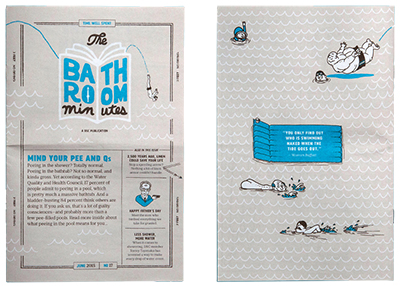 Can we all just agree that digital companies are grooving on print? Netflix launched a magazine. Bumble launched a magazine. Airbnb launched a magazine. Facebook launched a ma … even Dollar Shave Club launched a magazine (perfect for reading in the loo?)
Can we all just agree that digital companies are grooving on print? Netflix launched a magazine. Bumble launched a magazine. Airbnb launched a magazine. Facebook launched a ma … even Dollar Shave Club launched a magazine (perfect for reading in the loo?)
Digital brands are falling over their online roots to publish in print.
But it’s not really one of those “opposites attract” sort of love stories. According to What’s New in Publishing, there’s a very good reason these digitally native brands are stepping outside their cyber caves and creating physical print magazines.
“There are a plethora of reasons but the primary motive behind this move is simple: these brands are turning to magazines to protect their own platforms and products. All of the aforementioned brands are facing serious competition from rivals who are following the trails they have blazed – and in the face of this competition, they need to find new ways to build loyalty and future-proof their businesses. Netflix for example, under threat from Amazon Prime and Disney Plus, are forecast to invest as much as $22.5bn in original content per year by 2022 in a bid to keep people using their service.
“But these digital brands are looking for additional ways to enhance their position stand out from the competition,” the article continues. “These brands need to find a way to engage their audiences in a more intimate manner, and so they are turning to magazine media to help reinforce their primary content offer. For example, following the release of Dollar Shave Club’s print magazine Mel, CEO Michael Dubin said he saw the magazine as a way to ‘develop a deeper connection with its customer base, or member base in our case. We are building a sustainable alternative model to supporting a strong content brand’.”
This deeper engagement is one of the true benefits of print magazines. Our human brain loves the experience of a tangible, unplugged experience. Magazines offer the landscape in which true connection … by choice, not distraction … can happen.
“Because it is tangible, print publications provide a sensory experience, and with this in mind, has the ability to elicit emotion in the reader,” writes Trudi Coetzee in Printulu. “All marketing strategies must be put together to provide a rewarding, informative, and engaging experience. And print media offers the opportunity to do so.
“Studies have shown the difference between the way people process digital information, and the way they process printed information,” Coetzee continues. “Print readers maintain the capacity to concentrate on longer and more in-depth content. This is because this platform doesn’t come with any distractions, as opposed to the countless distractions on screen and online.”
Of course, this begs the question “how big do I have to be to publish in print?” Consider this – adding a print magazine to your existing content marketing may take more outlay than a round of social media ads. But as Coetzee explains, an integrated marketing campaign around both physical and digital media is working across industries, for big and small brands.
If a brand has something worth saying, it’s worth saying in print. The rise in brand journalism … the new old brand darling … shows that even digitally-native companies understand the value of the printed page.
